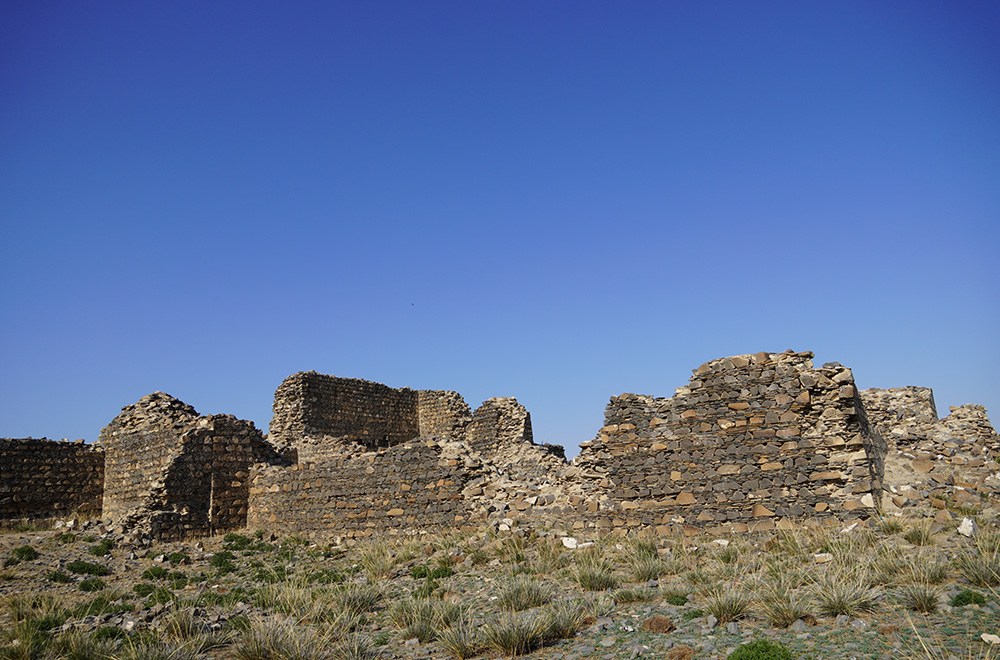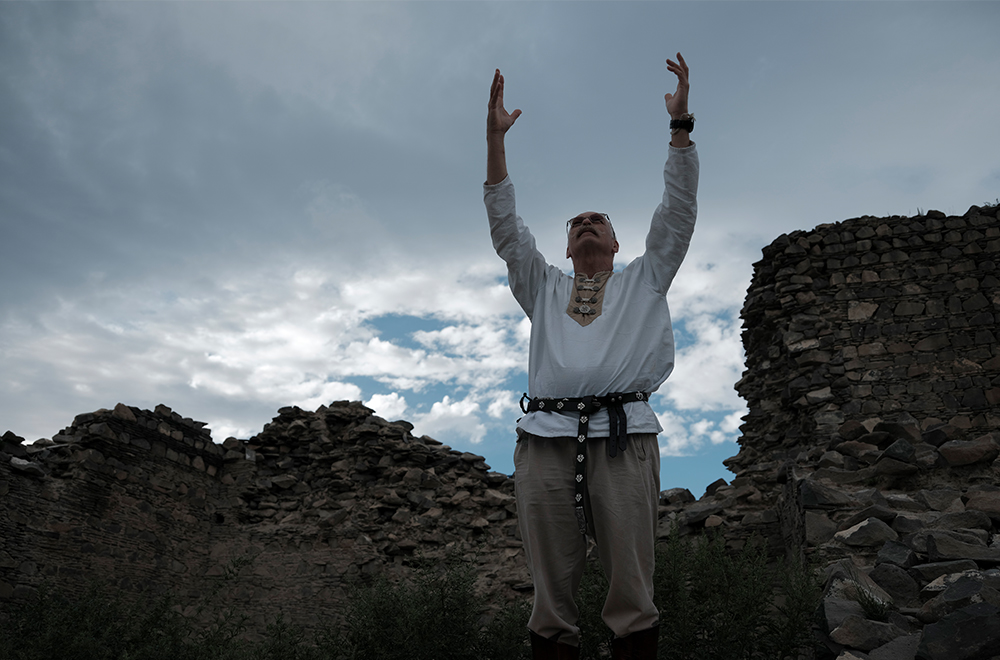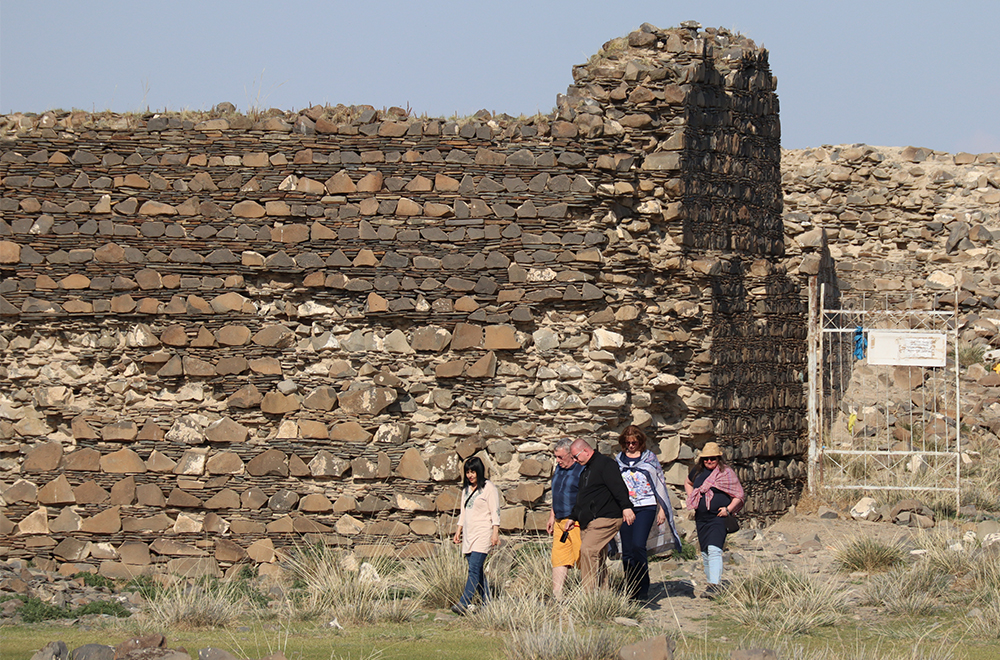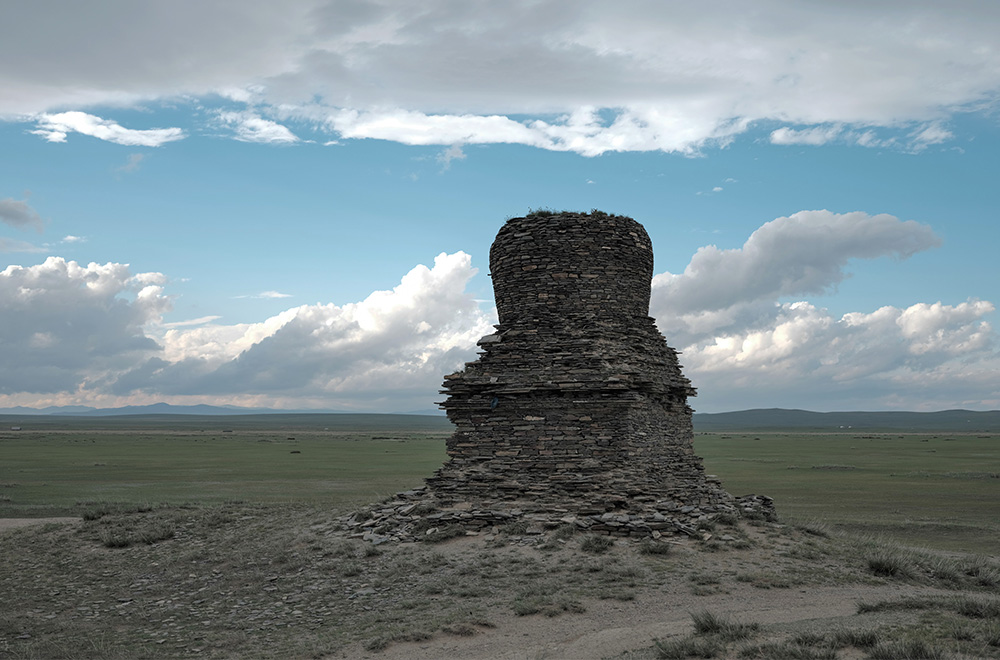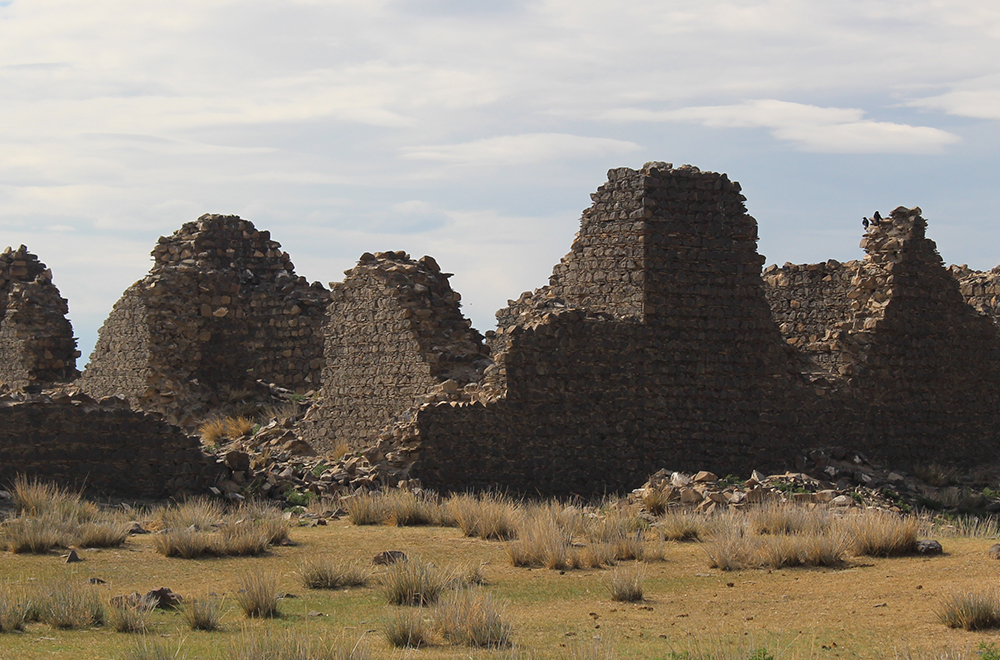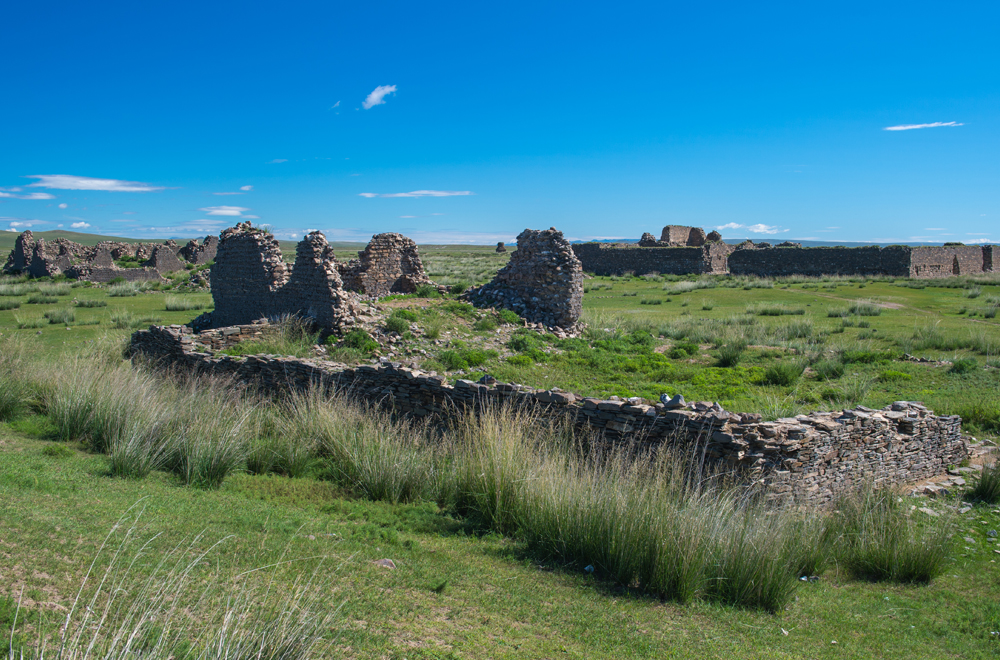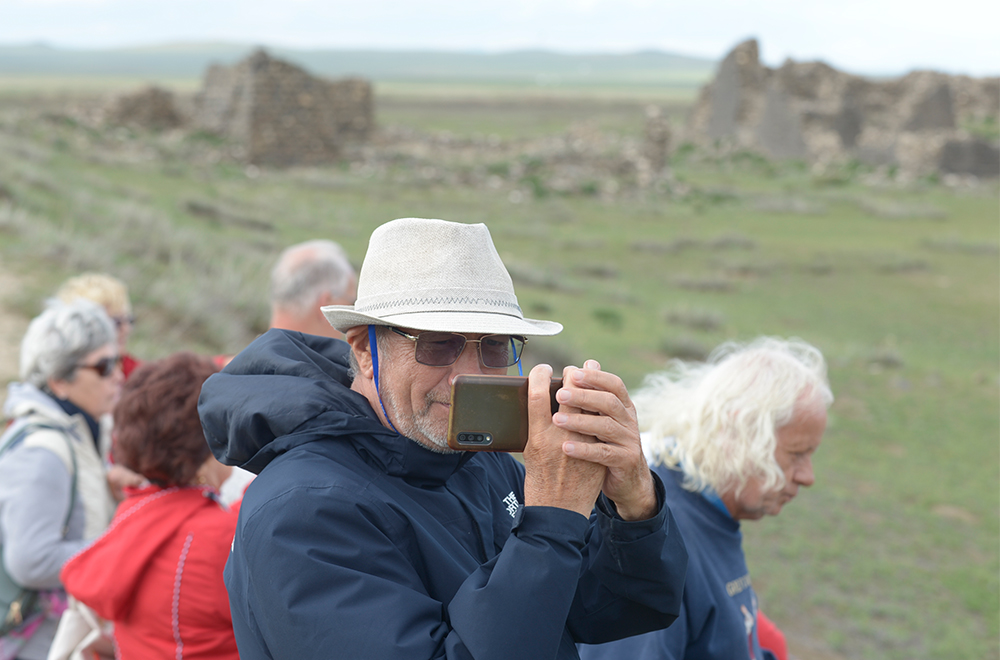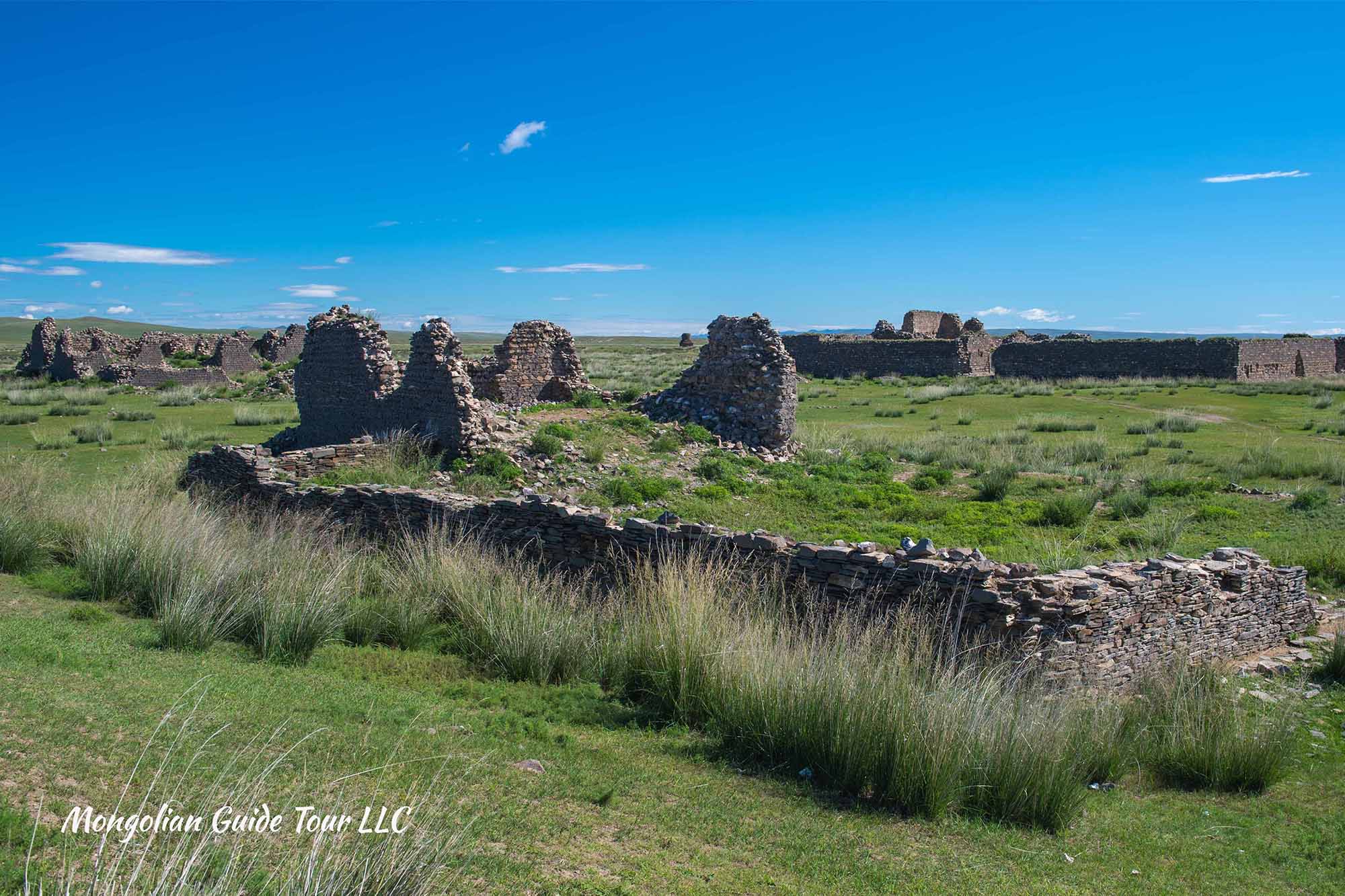
KHAR BUKHIIN BALGAS
As locals named Prince’s Ruin or Khadaasan’s Ruin, the ruins of the fortified settlement of Khar Bukhiin Balgas are related to the monuments of the Khitans period (10th-11th century). According to the archaeological studies that had been conducted on the ruins, a large number of ceramics, including roof tiles with Khitan scripts, were found. Also, the excavated clay utensils and vases’ shapes and patterns were similar to the Uyghur artifacts found in the basins of Black Lake and the East Sea.
The ruins of Khar Bukh Balgas can be found mid-way between Ulaanbaatar and Ugii Lake tourism zone, 170km from both sides, in the Dashinchilen soum area of Bulgan province. A name of this settlement originated from the near stream named “Khar Bukh” while “Khadaasan” is the name of the low hill located in the southwest of the stone ruins.
It covers an area of around 500 square meters and looks attractive and magnificent from a far distance. The fortress inside has traces of its two main streets and the buildings on both sides. The traces of a protecting wall and drainage protections for some building can be noticed immediately. The fortress built with volcanic basalt, grindstone, and sedimentary rock beautifully stacked on top of each other in the base made with hardened and solid structure using rammed earth. Walls of the fortress were placed to form a square and had a gate on each side.
However, the fortress is related to the X century’s Khitans, some inside buildings are considered to the history of the XVII century. It could be observed the wall trace of two-story building in the inside of the fortress. After studying the facility, the scientists noted that the stone walls building methods were similar to the those used by the Mongols in the XYII century. So it is concluded that the buildings were built in the first half of the XYII century by the Tsogt Huntaij (Tsogt prince) who was successor of the Golden lineage of Chinggis Khan. Also, one of his descendants, Provincial nobleman Norovjantsan who settled nearby this site, confirms so. Therefore, in 1945, a historical movie called “Tsogt Taij” was recorded at this site.
The remains at Khar Bukh Balgas have been studied several times in 1934, 1948-1949, and 1970s. In 1970, a Mongolian-Soviet research team led by Mongolian scientist Kh.Perlee and Soviet scientist E.V.Shavkunov found a collection of "Mongolian laws" from the ruined stupas of the fortress. This artifact written on birch bark was counted as an "extraordinary valuable artifact" which is relevant to the XY-XYI centuries. In addition to legal provisions, the birch bark law book also contained religious scriptures and the Mongolian alphabet. Later, the team of the joint Mongolian-Japanese "Inscription" project also found an ancient manuscript with more than 60 pages written on a similar cork. Scholars believe that these manuscripts' content was the history about Buddhism's development in Mongolia, first monasteries' establishments, and Buddhist scriptures' translation into Mongolian. There were several types cork books, the smallest being 7x4 cm and the largest being 14x5 cm. Book's each page was decorated by lines and motleys. Also, page number was uniform and written according to a well-established procedure. This shows that the inscriptions had been created by skillful and experienced scribes. Therefore, the above writing discovery confirms that Mongolians made cork books in the XY-XYII centuries and suggests the Khar Bukh Balgas was a major historical and cultural center. In 1998, this area taken under state special protection. The rare relics, written in Mongolian and Tibetan scripts with a bamboo pen in black ink on birch cork, is now kept in the National Library of Mongolia.
There can be found a small "museum" next to the ruins. The museum exhibits the artifacts from the excavation, such as carved turtle pedestals, patterned stones, remains of wooden columns, iron nails, iron locks, temple spires, deities carved on stone, clay sprinkles, bone articles, ankles of large and small animals, and fragments of Chinese pottery. Entrance fee for the museum is 2000 MNT.


